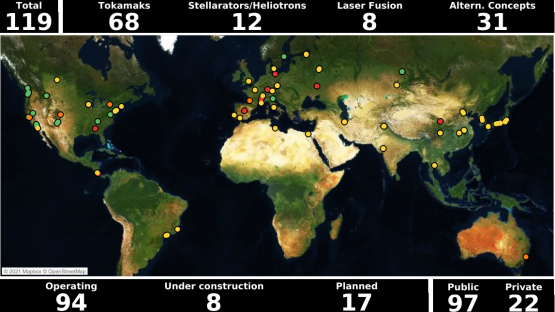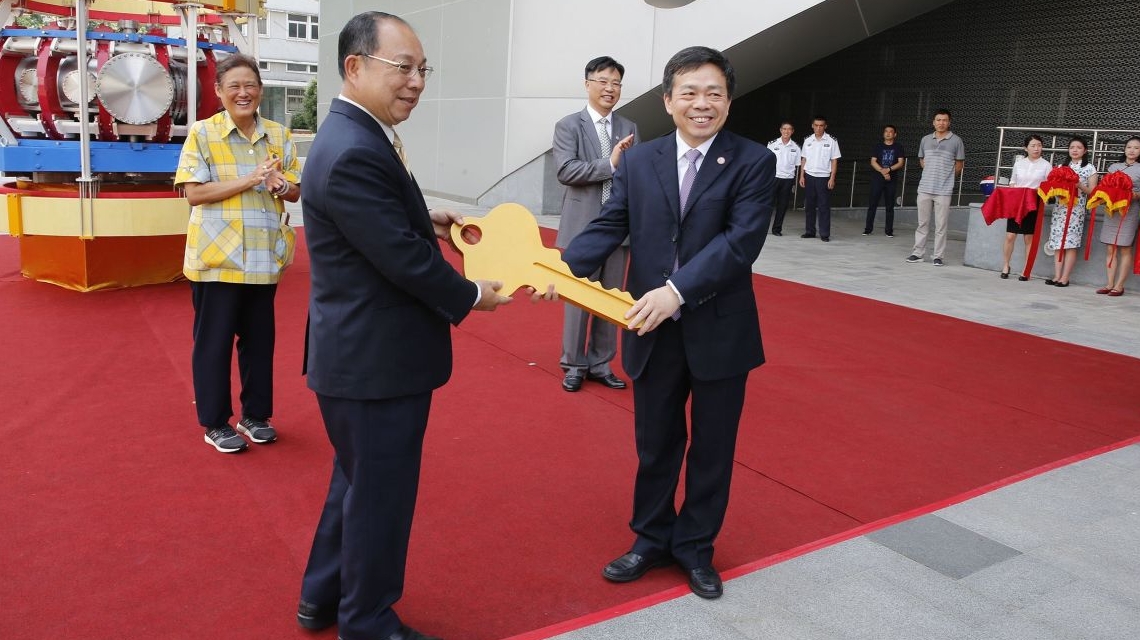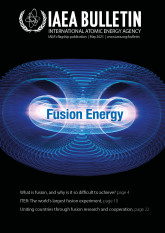
If you would like to learn more about the IAEA’s work, sign up for our weekly updates containing our most important news, multimedia and more.
Uniting countries through fusion research and cooperation
Elodie Broussard

Over 100 fusion devices (public and private) are currently in operation, under construction or being planned. (Photo: IAEA Fusion Device Information System)
“Shoot for the moon. Even if you miss, you’ll land among the stars,” author Norman Vincent Peale once said. When it comes to nuclear fusion, scientists are shooting for the stars, as they seek to discover whether it is possible to generate fusion electricity on an industrial scale here on earth.
Globally, experts from around 50 countries are involved in research in plasma physics and nuclear fusion technology development. Many of these countries are working to intensify their fusion research programmes in the face of a rapidly growing energy demand and accelerated climate change from the burning of fossil fuels.
To facilitate ongoing international efforts, the IAEA offers its Member States a range of research and capacity building activities — sometimes at the regional level — helping to bridge the gaps in fusion knowledge and experience between countries.
Over the past 50 years, the IAEA has supported fusion research and development worldwide by organizing a variety of fusion-related forums, including the biennial Fusion Energy Conference. The IAEA also organizes a series of workshops on demonstration fusion power plant concepts, a series of Technical Meetings on topics relevant to fusion science and technology, and coordinate research activities through which it brings together institutions and scientists to address key issues of common interest.
Through its publications on fusion, such as the Nuclear Fusion journal and other series, the IAEA disseminates knowledge and information and helps facilitate the spread of advanced knowledge in the scientific community. In addition to maintaining a fusion portal and a database of fusion devices, the IAEA has established numerical data libraries of fundamental molecular and nuclear data that are indispensable for fusion research and technology development. Collaborating with many partners, the IAEA also organizes and supports education and training activities on fusion, including international and regional schools and workshops.
New to the global fusion scene, Costa Rica receives IAEA support to bridge its gaps with other countries through technical development and capacity building. In 2019, a workshop organized by the Technology Institute of Costa Rica with IAEA support offered participants from Latin American countries an opportunity to take part in joint experiments and receive training in operating the two small fusion devices hosted at the institute.
Strengthening the links between fusion leaders and contributing countries
Six countries and the European Union, through Euratom, are cooperating in the world’s largest fusion experiment, ITER, an experimental fusion reactor under construction in France.
“For countries which are not part of the ITER project, the IAEA performs an important bridging function, disseminating knowledge from ITER to the wider community and vice versa. It does so via Technical Meetings, workshops, schools and e-learning materials, all including the contribution of ITER experts,” said Danas Ridikas, Head of IAEA’s Physics Section.

Donated to Thailand in 2018, the HT-6M tokamak is a main pillar of the country’s fusion roadmap. (Photo: ASIPP, China)
As Thailand will have its first ever fusion device in the near future, this project will enable us to start our own fusion programme.
Inspiring a new generation in Southeast Asia
Since 2014, the Association of Southeast Asian Nations (ASEAN) School on Plasma and Nuclear Fusion has been one of the key activities towards initiating a fusion programme in Thailand and advancing fusion research in the region. In January 2020, the IAEA and ITER supported the school in promoting interaction between young talent and international leading researchers. “The IAEA provided experts who shared knowledge and experience and greatly inspired the young generation,” said Kanchalika Dechates, Head of International Cooperation at the Thailand Institute of Nuclear Technology (TINT). More than 80 young researchers from the region participated in the school.
To strengthen training and collaboration between research teams in developed and developing countries, since 2004 the IAEA has led a coordinated research project on small and medium size fusion devices that brings together researchers from 19 countries. “This project represents an opportunity for Thai researchers to meet and work collaboratively with lots of experts worldwide,” said Boonyarit Chatthong, Assistant Professor at the Prince of Songkla University in Thailand.
This long-standing partnership makes it possible to perform joint and comparative experiments, train personnel across institutions and countries, and educate a new generation of fusion scientists in cutting-edge theories and techniques. “As Thailand will have its first ever fusion device in the near future, this project will enable us to start our own fusion programme,” said Chatthong.
The construction of an experimental tokamak in Thailand is the central activity in the country’s fusion development programme. It will be the first fusion device operated by ASEAN and a crucial learning platform for Thai and ASEAN researchers.
In 2018, the IAEA allocated grants for Thai scientists and engineers to attend the IAEA Fusion Energy Conference, which took place in India. That year, a Thai researcher also joined the Joint ICTP–IAEA College on Plasma Physics in Italy, which gathered about 70 advanced PhD students, post-doctoral researchers and other young researchers from 23 countries, fostering international collaboration.

